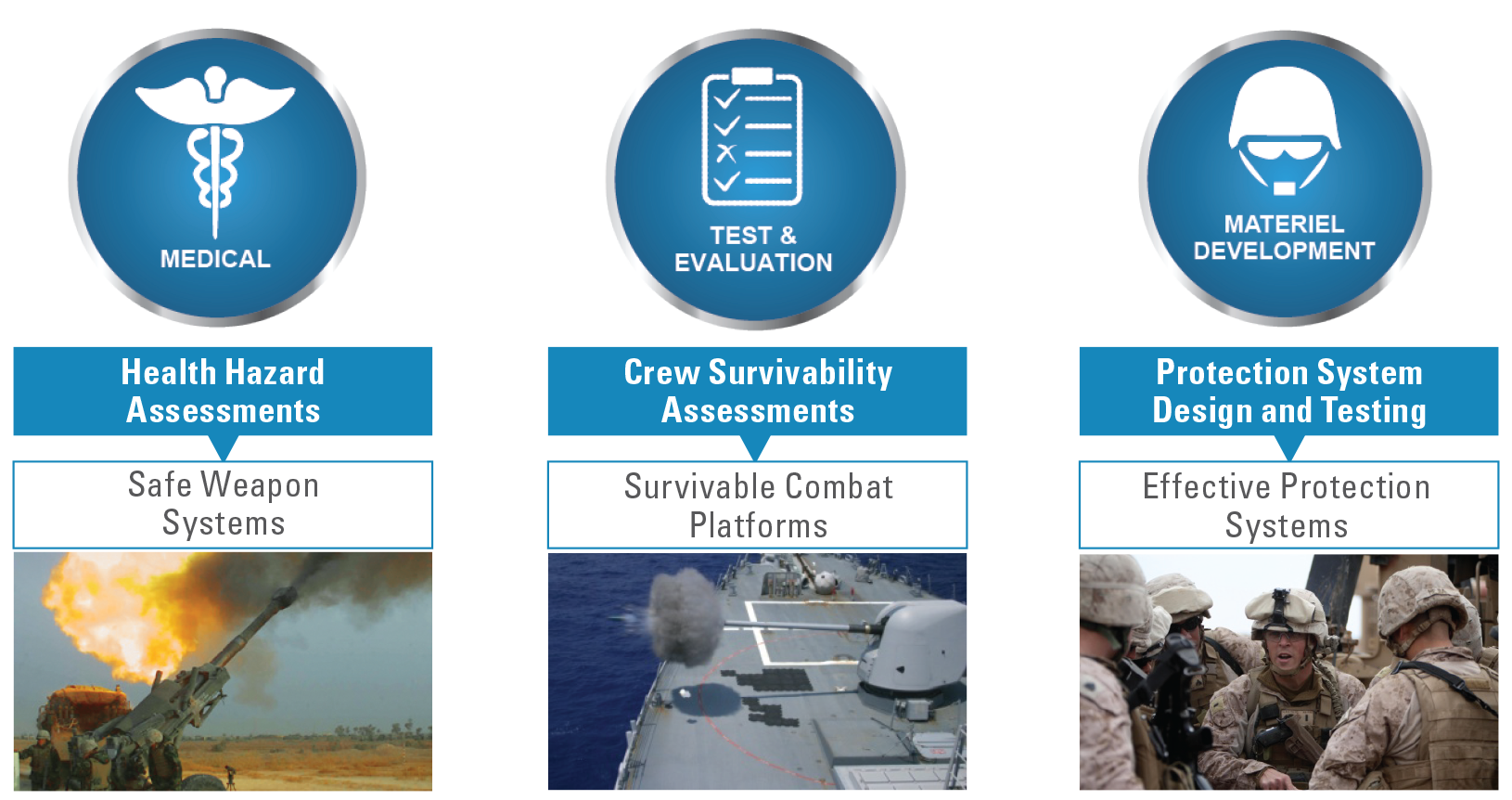The BIPSR Process seeks to ensure that the DoD uses the best available, scientifically sound, and biomedically-valid standards that will protect our Service Members from blast injuries. It synergizes efforts across a diverse community of medical and non-medical researchers within the DoD, other Federal agencies, academia, the private sector, and international communities. The BIPSR Process identifies and assesses the suitability of existing candidate standards and recommends standards that meet DoD Stakeholder needs with a specified level of validity, rigor, precision, and confidence.
The BIPSR Process (PDF 1.8 MB) is not a research program, does not develop new candidate standards, nor does it attempt to impose acceptability or survivability requirements on the Stakeholder communities.
Candidate standards under the BIPSR Process broadly include injury risk criteria that can take the form of injury risk functions in dose-response form, injury thresholds, or more complex models, all of which provide the scientific basis for blast injury prevention. Candidate standards include injury thresholds, human injury probability curves, and injury prediction tools needed to generate the information for informed trade-off and risk acceptance decisions by appropriate decision-makers in the research, development, testing, and evaluation (RDT&E), medical, materiel development (MATDEV), and operational stakeholder communities across the DoD. These standards support weapon system health hazard assessments, combat platform occupant survivability assessments, and protection system development and performance testing .

The BIPSR Process is designed to identify and critically evaluate blast injury prevention candidate standards and to recommend those that would best serve as MHS Blast Injury Prevention Standards to inform the DoD medical, testing and evaluation (T&E), materiel development (MATDEV), and operational communities. The BIPSR Process can be tailored for a specific mechanism of injury, resulting in an objective set of recommendations that can serve as the basis of a medical standard.
The BIPSR Process has two major objectives:
Stakeholders from across the DoD drive the BIPSR Process. They define the problem statement and scenarios to be assessed, identify gaps in the current standard set, drive implementation, and participate in all major decisions throughout all phases of the BIPSR Process. The BIRCO continues to implement the BIPSR Process with support from the MITRE Corporation, a DoD trusted agent that operates Federally Funded Research and Development Centers (FFRDC).
The BIPSR Process for each BIPRS Process Blast Injury Type is executed through routine meetings where Stakeholders and subject matter experts (SMEs) review materials, provide feedback, discuss relevant topics of concern and interest, and make decisions.
Core elements of the BIPSR Process include:
The BIPSR Process consists of seven fundamental sub-processes represented by six pillars supporting an overarching process.
The BIPSR Process is designed to leverage the information from each of the previous phases, which builds layers of information about the viability of the candidate standards. As a result, the latter sub-processes (V and VI) do not necessarily occur in sequence but are iterated as necessary to produce sufficient information to support the recommendations. The timeline associated with implementation of the BIPSR Process is driven by the number of candidate standards identified, the complexity of the candidate standards, and the complexity of the Blast Injury Type. The BIPSR Process can be tailored to support compressed, quick turnaround implementation that meets the need and critical nature of specific Blast Injury Types.
The BIPSR Process is initiated by a literature review that serves two purposes: (1) Identify existing capabilities and standards pertinent to the injury under evaluation, and (2) compile a list of appropriate SMEs who may serve on the SME Panel performing the evaluations. Once a list of candidate standards is defined, the iterative nature of the BIPSR Process builds layers of information about the capabilities of each candidate under consideration. The SME Panel conducts the initial evaluations, giving balanced, objective, and knowledgeable advice on the candidate standard's suitability for the DoD's intended uses based on the available information. The list of candidate standards is narrowed based on an evaluation against a set of defined criteria. Then the candidate standards undergo a detailed examination of capabilities through a rigorous test process focused on Stakeholder-defined test scenarios. Once the test cases have been run, the results are assessed using statistical tools. Information generated through the evaluation process serves as the basis for a meeting that provides a forum for Stakeholders (users, analysts, and developers) to build consensus, share information, and discuss the applicability of a candidate standard to the DoD's intended use. In the final step of the BIPSR Process, the non-advocacy SME Panel and MITRE team develop standards recommendations, identify gaps, and prepare process improvement recommendations.

Your 15 minute session will timeout in approximately 10 minutes.
If you're in the middle of entering information, please close this warning and save your progress (if possible) or finish up your task.
If your session fully times out, you will lose any un-saved work.
Your current Blast Injury Research Program session has expired.
Your next click will take you away from the private area, and you will lose any work you have in-progress.
Please enter your email address, and try again.